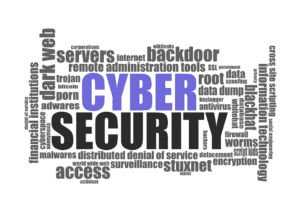 Identity theft is a rather dangerous crime, which can be made relatively simply using a person’s data found online. As a result of the theft of personal data, a person may face the fact that bank accounts will be opened in his name (or, in especially difficult cases, a loan is taken), criminals can impersonate themselves and perform many unpleasant, even illegal actions on her behalf.
Identity theft is a rather dangerous crime, which can be made relatively simply using a person’s data found online. As a result of the theft of personal data, a person may face the fact that bank accounts will be opened in his name (or, in especially difficult cases, a loan is taken), criminals can impersonate themselves and perform many unpleasant, even illegal actions on her behalf.
The theft of personal information in our time is utterly simplified – for this, attackers do not even need to leave the house: everything that is needed to commit such criminal acts is freely available online.
This means that the task of protecting personal data is much more relevant and important than several years ago.
Obviously, the ideal way to prevent identity theft through the Internet is not to use the Internet at all, but this task is obviously difficult to implement.
Here are some tips on how to protect yourself and prevent the theft of your personal data.
1. Do not fall for phishing sites
Phishing sites are web resources that position themselves as legitimate, but in fact are fake. The purpose of their existence is the theft of personal information, such as a login password or a credit card number.
You need to be especially careful if the site requests the following information:
- Credit card number
- Bank account number
- Driving license number
- Home address and phone number
There are cases when such a request is legal, but it will not be superfluous to check the legitimacy of such sites.
In order to recognize a phishing site and not go on about the illegal demands of fraudsters, you should clarify (before the character) the spelling of a web address (domain name). Just one wrong letter in the address (odnoklasniki instead of odnoklassniki) is enough to make a site suspicious. Regarding the request for personal data from the resource, it would be best to find in the contacts the phone of the site administration and call back, specifying the legality and necessity of such a request.
2. Use new versions of antiviruses
Great harm to the computer and the user can cause various kinds of malicious programs – backdoors and keyloggers. You can protect yourself from them with the help of modern, timely updated antiviruses. Ideally, it is recommended to use both antivirus and software of the Anti-Mailware class.
3. Use OpenDNS
OpenDNS is not only a great way to speed up your Internet connection, it is also the ability to filter incoming traffic. This means that the OpenDNS service will notify the user about visiting a dangerous or phishing site.
4. Unique passwords for each site
One of the most frequently used tricks for stealing user information is authorization via an email address and a single password. In case the user uses the same passwords for different sites, hacking one site means hacking at the same time several others.
Creating a strong password is the first step to prevent identity theft. Remember passwords, you can use special applications and online services – for example, Lastpass or Keepass.
5. Online shopping only on reputable sites
Enter credit card information and make purchases is only on reliable sites. You can check the reliability of the site, for example, using the Web of Trust online service.
6. Do not disclose too much personal information using social media.
Social media is one of the largest providers of personal user information. Therefore, to talk about all your movements in social networks is a bad idea. For example, check-in using FourSquare at a bank branch makes it easier for an attacker to steal your data.
7. Monitoring Your Credit History
Some banks may provide data on a person’s credit history. Such information should be monitored by yourself in order to be sure that you are not listed as an unknown loan.
8. Wireless Security
Wireless networks are another source of user data loss. Especially open wireless networks that do not use WPA encryption and passwords. Attackers with the help of uncovered wireless networks can easily track its traffic and, for example, intercept calls to some sites. At the same time, it is possible to build a detailed questionnaire for users of this wireless network based on the resources they visit. Likewise, you can intercept password data and credit card numbers entered.
9. Using software only from trusted sources.
Installing suspicious software makes your computer vulnerable to intrusion from the outside. Especially this can happen as a result of installing various kinds of games, screensavers (splash screens), “cracks”. Often, sites that distribute such software simultaneously spread viruses.
Picture Credit: typographyimages
